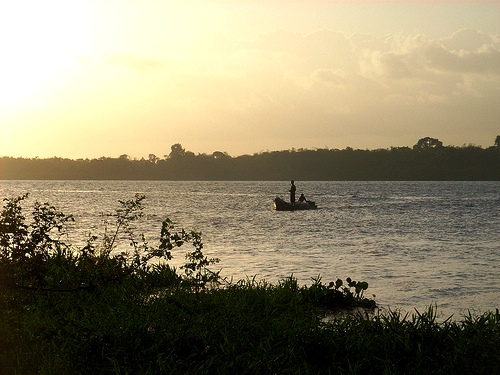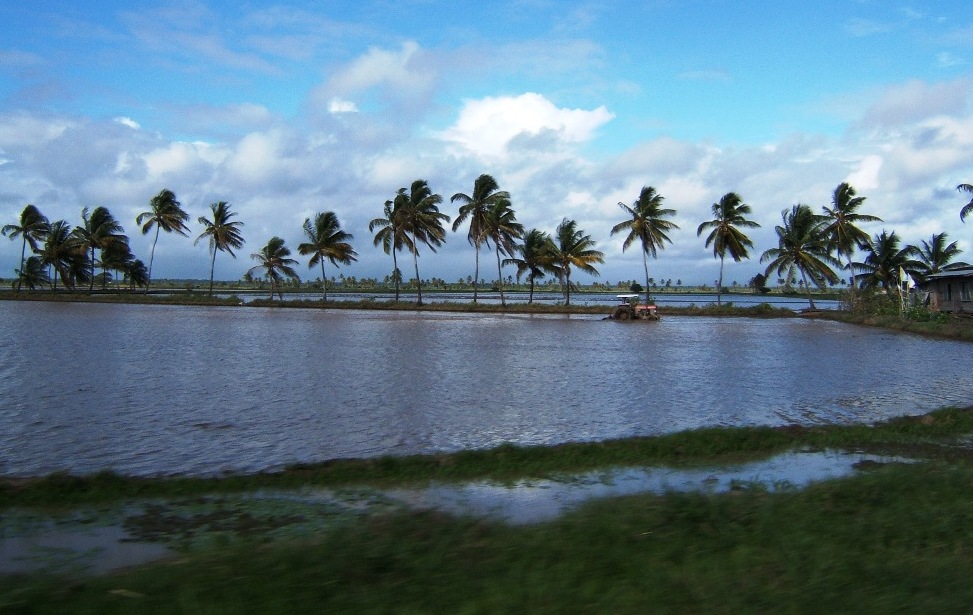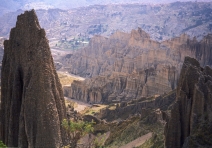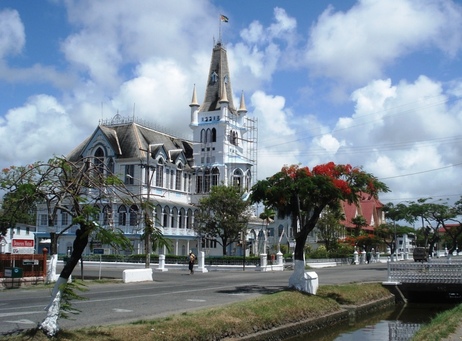WORLD TRAVEL NEWS ARTICLE
GUYANA
Guyana (formerly British Guyana) fronts the Atlantic Ocean on the north east coast of South America and shares its western border with Venezuela, its eastern frontier with Suriname and its southern boundary with Brazil.
The major airport is Cheddi Jagan International Airport at Timehri, 25 miles south of the capital of Georgetown from whence regular flights operate to New York and Barbados, and numerous internal flights are the main means of getting about the country. For the latest visa requirements visit www.projectvisa.com
The national currency is the Guyanan Dollar – 1 dollar = 100 cents. For current exchange rates visit www.xe.com
The population of the country is around 100,000 with Christian, Hindu and Muslim being the main religions.
Four major rivers shape the country – the Demerara, Essequibo, Berbice and Courantyne – from the high wildlife-rich savannah region flowing down through the vast tropical jungle to the coastal plain where numerous tributaries and creeks branch off to intersect the land where dams and dykes are prominent features. The native meaning of the name Guyana is Land of Many Waters.

Demerara River
Most people live on the coastal plain, but despite other similarities to the West Indies, the Caribbean beaches alone are a sun worshippers magnet. Guyana’s “beaches” are swamp and tidal marsh, much of it reclaimed for intensive arable farming, mainly rice and sugar cane. These are the main export commodities along with bauxite and a little gold.

Tractor in the rice fields
Few original Carib Indians occupy Guyana’s tropical rain forests. Many of the country’s inhabitants are descendants of those Africans who were captured and brought here to work as slaves on the plantations. Others trace their roots to ancestors who worked in the country under contract after the abolishment of the slave trade, coming here from Portugal and China. The majority, however, are Asian Indian, again tracing roots to the post slave trade era when their forebears came to work the sugar and in the rice paddies. To this day, Asian Indians continue to do this work, and now play a prominent political role in the running of the country with financial assistance from India, and often find themselves at loggerheads with the black communities and their wishes.

The Bandstand in Georgetown
Georgetown is hot and humid but its average 81°F temperatures are cooled by the trade winds. Given the nickname the garden city of the “Caribbean”, Georgetown, the capital and largest city of Guyana is situated on the mouth of the River Demerara. Most of the city is below sea level and carefully protected by dykes. It was founded by the French in 1781, developed by the Dutch, whose trademark dykes, canal systems and dams remain, and who named the city Stabroek. The British claimed it in 1812 and named it for King George. A treaty made in 1816 among the three countries gave Suriname to the Dutch, French Guiana to France and (British) Guyana to the British.
Nowadays some 240,000 people live in Georgetown, which floods regularly in the rainy season. The seawall and spectacular Georgetown lighthouse command the harbour entrance.
What to see and do in Georgetown
You should visit St Georges Anglican Cathedral, the world’s largest wooden cathedral. View the Dutch reminders of tropical hardwood-built timber houses on stilts and the dams, dykes and seawall with its lighthouse. Dutch and Victorian architecture is very pleasing and a wander through the tree lined streets and avenues, where you can admire pretty louvered shutters and window boxes, is to be recommended.
The Victorian Law Courts are worthy of a visit, situated in a lovely white painted, red-roofed building with balconies from that era. The cast iron clock tower at the market is a prominent feature of the city and you should visit the Walter Roth Museum of Anthropology, if only to admire the elegant wooden home in which it is housed.
The Meeting Place of the People (Amerindian Umana Yana) was built for the 1972 Foreign Ministers’ Conference and thatched with palm. It is open to the public, and the Liberation Monument is sited in its grounds. There is also the National Cultural Centre, which incorporates the theatre, to be seen.
The lovely Botanical Gardens with exhibits of many jungle species are well worthy of a visit and you can visit the Parliament Building which is still in use, and was one of the places visited by Queen Elizabeth during her 1994 Tour.
Be aware that the cost of living is high here; everything in the city is expensive. Many new roads have been built and the Harbour Bridge over the River Demerara offers an alternative to taking the ferry. Buses and taxis are plentiful.

Kaieteur Fall
Elsewhere in the country, most visitors sample the jungle experience. Top of everyone’s want-to-see list is Kaieteur National Park and more specifically, the immense Kaieteur Falls. Unless you are prepared for days of overland/water travel, you should go there by plane. The Falls occur where there is an overlap of the earth’s crust, and they are quite utterly incomparable. Most flight-seeing trips land on a small strip near to the Falls, thus enabling you to disembark and walk to a view point.
Some excursions take in both Kaieteur Falls and Orinduick Falls on the Brazilian border in the beautiful lush Pakaraimae Hills.
Although eco-tourism is still finding its feet, there are opportunities to stay in rainforest lodges – the closest one to Georgetown is the Timberhead Rainforest Lodge.
You can also sample ranch life in the Savannah where you may spend long peaceful days bird and wildlife watching. The Rock View Lodge at Anai includes boat trips as well.
For information about the weather conditions and statistics visit www.worldweather.org
You may also like to read

BRAZIL - South America
Tour-smart travellers will already know that the excitement is building in the massive country.

BOLIVIA - South America
A fascinating country, Tour-smart gives you an insight to landlocked Bolivia which boasts the world’s highest capital city - La Paz.

Comments